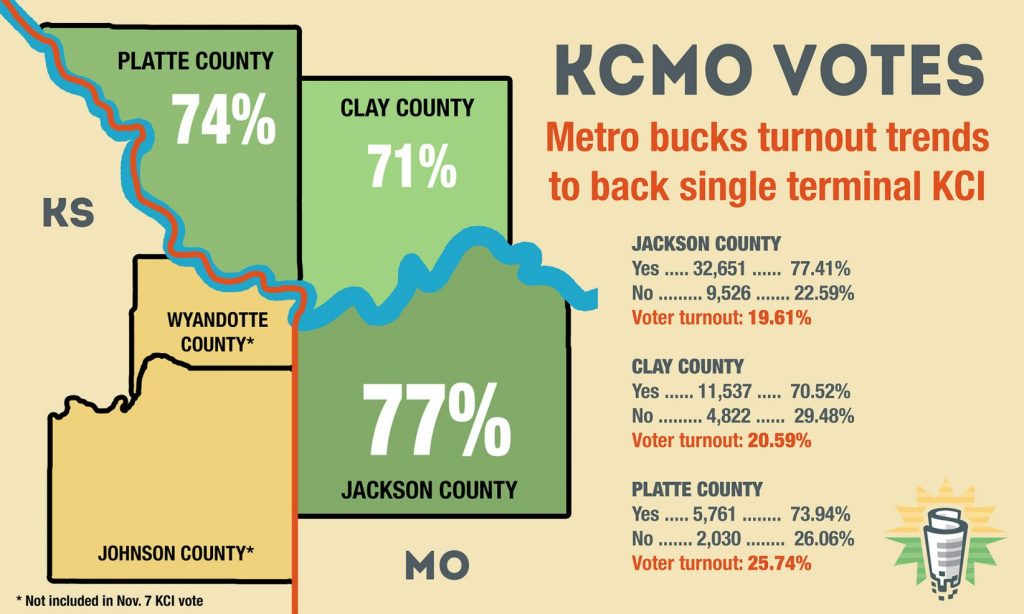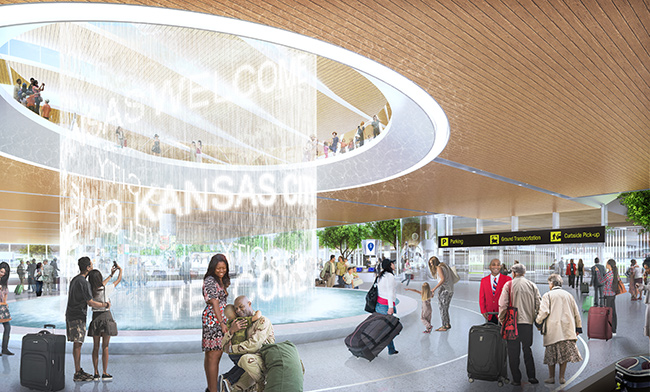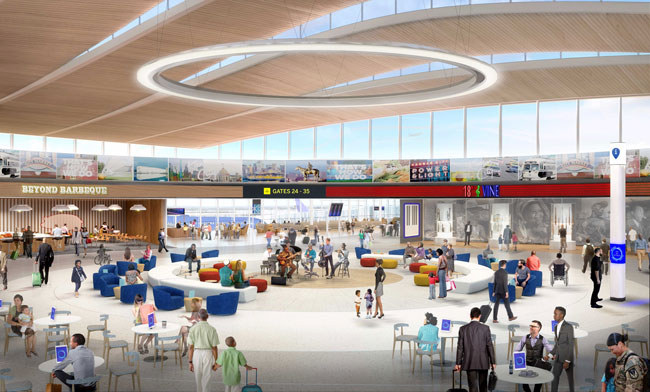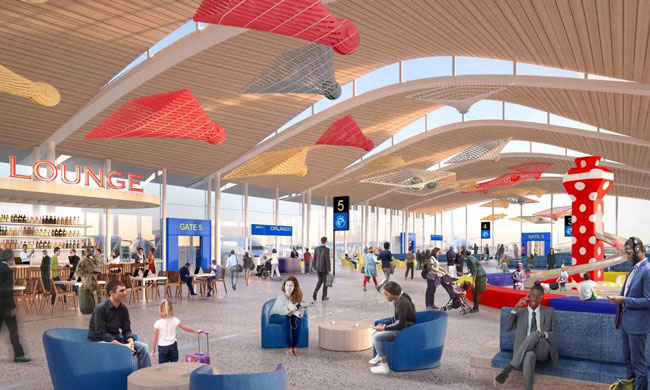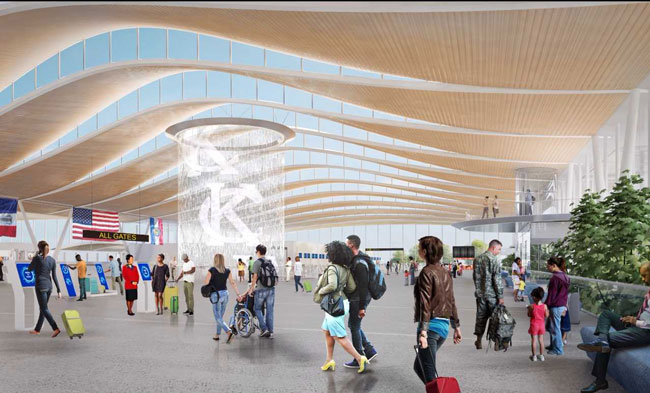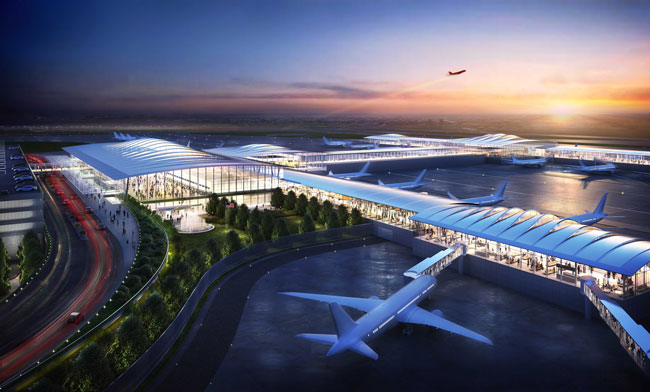Capping a six-year journey fraught with turbulence, delays and political drama, voters overwhelmingly ratified plans to build a new $1.3 billion airport terminal, which would replace the existing Kansas City International Airport (KCI).
“Kansas City has never been about being just mediocre,” said Michael Wilson, founder of luxury watch brand Niall and a frequent traveler at KCI. “This area was founded on and has been driven by pioneers. Look at how things should be instead of how they shouldn’t be. That’s what I think is important. … It’s the first place this city gets judged on and I believe a new world-class terminal will elevate this city to the next stage.”
Supporters of a new airport terminal snagged 75 percent of the vote — 49,949 in favor to 16,378 against — in a decisive statement that Kansas City is eager to replace its three horseshoe-shaped terminals built in 1972. Edgemoor Real Estate & Infrastructure will spearhead the development of the new terminal, which aims to be open in 2021.
Prognosticators anticipated a close vote, with vocal opponents maintaining that KCI’s layout offered the apex of convenience and that the new terminal plan would ultimately result in a steep bill to taxpayers, despite city assurances to the contrary. With a concerted effort led by Kansas City Mayor Sly James, support for a new terminal was rallied among civic leaders, economic development organizations and the business community to unite voters, attracting an overall turnout of about 20 percent among Kansas City, Missouri voters.
Among the loudest calling for a new airport terminal were members of Kansas City’s entrepreneurial community, whose ambitions eye an impact beyond the region.
An unattractive airport devoid of modern amenities has hampered Kansas City potential, said Darcy Howe, managing director of the KCRise Fund and an angel investor. Howe — whose fund is a part of the KC Rising economic growth initiative — said her work in economic development has revealed how hindering the dated airport can be.
It has particularly affected the region’s ability to attract top talent, Howe added. A new terminal should rectify that challenge, she said.
“A new KCI will be one more pillar demonstrating innovation and a contemporary view of our regional future,” Howe said. “As our entrepreneurial ecosystem grows, companies seeking talent will show applicants living elsewhere that from the moment they step off the plane an exciting future awaits. … I’m a believer in leaving the woodpile higher than you found it and future generations will benefit by this action of our citizens.”
KCI’s lack of direct flight options have limited Lesa Mitchell’s ability to bring in high-caliber mentors from the coasts to the Techstars KC accelerator, Mitchell said. Techstars KC welcomes 10 startups each year for a three-month, mentor-led program, which taps business leaders from around the world, she said.
A new airport terminal is going to help create a more valuable experience for the startups participating in the accelerator thanks to to more accessible mentors, she said.
“Fifty percent of the mentors for Techstars KC companies flew in from San Francisco, Boston and New York City to meet with Kansas City companies,” Mitchell said. “The only reason we ever have issues getting people to fly to Kansas City is the lack of direct flights. Since the majority of investors are located in those cities, and we have very few direct flights from those cities, it has been a big hurdle to overcome. The new airport will most likely solve this problem.”
Kansas City Mayor Sly James, who staked much of his mayoral legacy on the new terminal vote, was unsurprisingly thrilled with the vote’s result.
I’m SO DAMNED PROUD of #KansasCity !! Huge decision about our future!!
— Mayor Sly James (@MayorSlyJames) November 8, 2017
To learn more about the project, check out architectural renderings by SOM Architects below and read our FAQ here.




